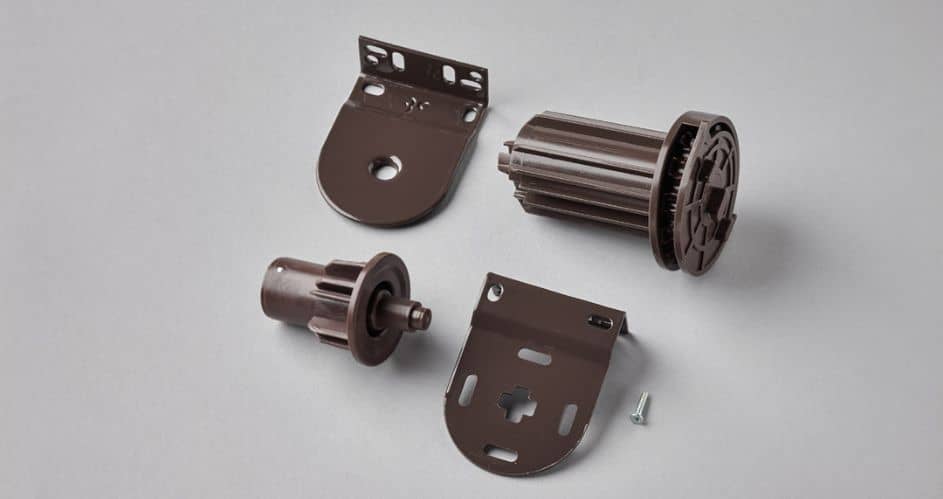
Roller blinds are a popular and stylish way to dress up windows in modern homes. They offer a range of benefits, from privacy and light control to energy efficiency and style.
With advancements in technology, there are now several types of roller blinds available, each with its own set of benefits and drawbacks.
Our article explores the four most common types of roller blinds including spring operated, chain mechanism, cord mechanism and electric roller blinds with their advantages.
Spring-operated Roller Blinds
Spring-operated roller blinds are a popular choice for many homeowners due to their simplicity and affordability. This type of blind uses a spring-loaded mechanism to retract and release the fabric.
The blind is pulled down by hand to the desired height and then held in place by the spring tension. To release the blind, a small tab is pulled to release the tension and allow the fabric to roll back up.
Advantages:
- Affordable and easy to install
- Minimal maintenance required
- No need for cords or chains, making them child-friendly
Disadvantages:
- Limited control over the position of the blind
- Can be difficult to adjust the tension of the spring
- May wear out over time with frequent use
Chain Mechanism Roller Blinds
Chain mechanism roller blinds use a chain attached to the blind to raise and lower the fabric. The chain is pulled to release the fabric and then raised or lowered to the desired position. The blind can be stopped at any point by simply releasing the chain.
Advantages:
- Easy to use and adjust
- Offers more control over the position of the blind than a spring mechanism
- Can be used on larger windows
Disadvantages:
- The chain can be a hazard for children and pets
- Requires regular maintenance to keep the chain clean and functioning properly
- More expensive than spring-operated roller blinds
Cord Mechanism Roller Blinds
Cord mechanism roller blinds work in a similar way to chain mechanism blinds, but they use cords instead of chains.
The cords are attached to a pulley system that raises and lowers the blind. To operate the blind, the cords are pulled to release the fabric and then raised or lowered to the desired position.
Advantages:
- Offers greater control over the position of the blind
- Can be used on larger windows
- Can be adjusted with one hand
Disadvantages:
- Cords can be a hazard for children and pets
- Requires regular maintenance to keep the cords clean and functioning properly
- More expensive than spring mechanism blinds
Electric Roller Blinds
Electric roller blinds are the most advanced type of roller blinds. They use an electric motor to raise and lower the blind, which can be controlled by a remote or a smart home system.
These blinds offer the ultimate convenience and can be customized with a range of features, such as timers and voice control.
Advantages:
- Easy to operate with a remote or smart home system
- Offers complete control over the position of the blind
- Can be customized with a range of features
Disadvantages:
- The most expensive type of roller blind
- Requires professional installation
- May require maintenance or repair of the electric motor over time
Roller blinds are an excellent choice for homeowners looking for stylish and practical window coverings. With a range of mechanisms to choose from, you can find a roller blind that meets your needs and budget.
Whether you opt for simple blinds or high-tech electric roller blinds, there is a range of benefits that can enhance the look and feel of any room in your home.